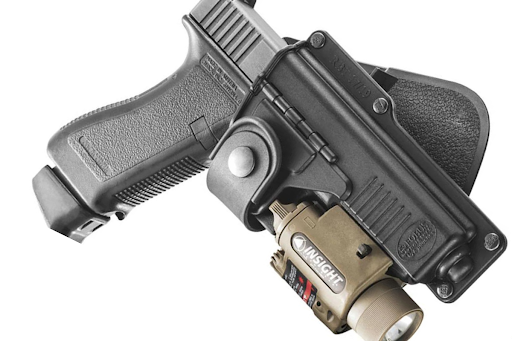A Comprehensive Guide to Choosing the Right Retention Holster

When it comes to carrying a firearm, security and accessibility are paramount. A retention holster offers both, ensuring that your weapon stays securely in place while still being readily accessible when you need it. Choosing the right retention holster involves understanding various factors, including retention levels, holster types, materials, and usage scenarios. This comprehensive guide will help you navigate these considerations and decide on the best retention holster for your needs.
Understanding Retention Levels
One of the first things to understand about retention holsters is the concept of retention levels. Retention levels indicate the degree of security a holster provides, ranging from basic to highly secure.
Level I Retention
Level I retention holsters provide the most basic level of security. These typically rely on friction or a simple mechanical device to keep the firearm in place. While easy to draw from, Level I holsters offer less security against unauthorized removal.
Level II Retention
Level II holsters add an extra layer of security, often involving a thumb break or another mechanical device in addition to friction. This level balances security and accessibility, making it a popular choice for many users.
Level III Retention
Level III holsters offer the highest level of security, incorporating multiple retention mechanisms such as thumb breaks, hood guards, and internal locking devices. These are ideal for law enforcement or individuals requiring maximum security.
Understanding these retention levels is crucial for selecting a retention holster that matches your security needs without compromising accessibility.
Types of Retention Holsters
Retention holsters come in various designs, each suited for different purposes and carry methods. Here’s a look at some common types:
Outside-the-Waistband (OWB) Holsters
OWB holsters are worn outside the pants and are popular for their comfort and accessibility. They are ideal for open carry or for situations where concealment is not a primary concern. Many OWB holsters offer multiple retention levels, making them a versatile choice.
Inside-the-Waistband (IWB) Holsters
IWB holsters are designed for concealed carry worn inside the pants for better concealment. While they generally prioritize discretion over high retention levels, some IWB holsters still offer Level II or III retention features.
Shoulder Holsters
Shoulder holsters provide an alternative carry method, distributing the weight across the shoulders and making the firearm easily accessible from under the arm. These holsters can be configured with various retention levels and are favored for comfort during extended wear.
Tactical Holsters
Tactical holsters are designed for military and law enforcement use, often incorporating multiple retention mechanisms and built to withstand harsh conditions. They are usually worn on a thigh rig or attached to tactical gear, providing quick access while maintaining high security.
Each type of holster offers unique benefits, and the choice will depend on your specific needs, preferences, and intended use.
Usage Scenarios
Different scenarios call for different types of retention holsters. Here are some common scenarios and the appropriate holster types for each:
Everyday Carry
For everyday carry, comfort and concealment are crucial. An IWB holster with Level I or II retention is often ideal, providing enough security while remaining discreet under clothing.
Law Enforcement
Law enforcement officers require holsters that provide maximum security and quick access. A Level III retention holster, such as a tactical holster worn on a duty belt, is typically the best choice.
Military and Tactical Use
Military personnel and tactical operators need holsters that can withstand harsh conditions and provide rapid access. Tactical holsters with multiple retention mechanisms and durable materials like Kydex are preferred.
Competition Shooting
For competition shooting, speed and ease of access are paramount. Level I or II OWB holsters are commonly used, allowing competitors to draw their firearms quickly while maintaining adequate security.
Conclusion
Choosing the right retention holster is a critical decision that involves understanding your specific needs, retention levels, holster types, materials, and usage scenarios. Whether you need a holster for everyday carry, law enforcement, or tactical use, there’s a retention holster designed to meet your requirements. Considering these factors and prioritizing security and accessibility, you can select a retention holster that enhances your firearm’s safety and peace of mind.


